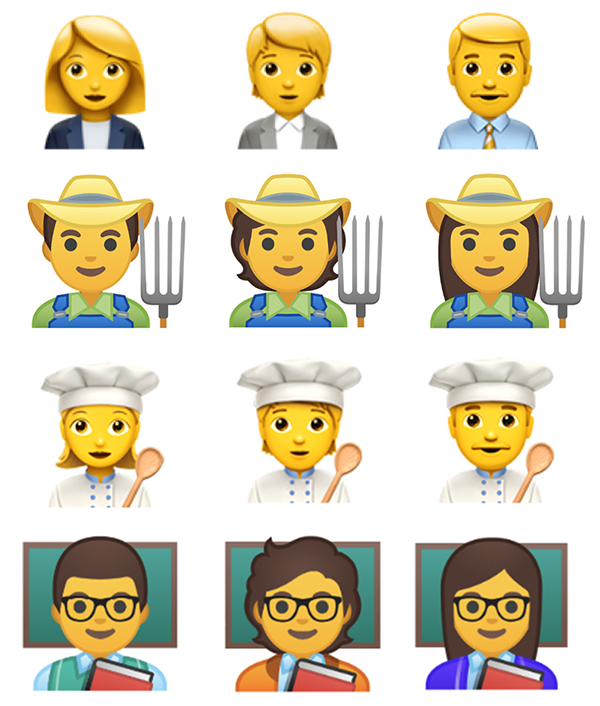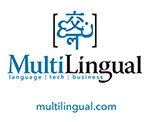The New Unicode.org Also Offers Emoji Enthusiasts the Chance to “Adopt a Character”
The Unicode Consortium, a nonprofit that maintains text standards
to support all the world’s written languages across every device, today debuted
a new look for
unicode.org. The redesigned
website will make information about the emoji proposal process more easily
accessible while encouraging public participation and engagement in all Unicode
initiatives.
“Unicode is a global technology standard that is one of the core
building blocks of the internet,” said Unicode board member Greg Welch. “Unicode
has helped facilitate the work of programmers and linguists from around the
world since the 1990s. But with the rise of mobile devices and public enthusiasm
for emoji, we knew it was time to redesign the Unicode website to make
information more easily accessible, and increase community involvement.”
Emoji were adopted into the Unicode Standard in 2010 in a move that
made the characters available everywhere. Today, emoji have been
used by 92% of the world’s online population. And while emoji encoding and
standardization make up just one small part of the Consortium’s text standards
work, the growing popularity and demand for emoji have put the organization in
the international spotlight.
“We’ve been working with the Unicode Consortium for several years
to open up the emoji proposals process by making it more accessible and
understandable,” said Jennifer 8. Lee, co-founder of Emojination. “While I
personally found the late-90s aesthetic of the developer-centric Unicode.org
site very retro and nerd charming, the new site redesign is a reflection of
Unicode’s deep desire to engage the public in its work.”
In addition to offering a clearer picture of the emoji submission
and standardization process, the new Unicode.org website offers information
about the Consortium and its mission to enable people everywhere in the world to
use any language on any device.
“Emoji are just one element of our broader mission,” said Mark
Davis, president and co-founder of the Unicode Consortium. “The Consortium is a
team of largely volunteers who are dedicated to ensuring that people all over
the world can use their language of choice in digital communication across any
computer, phone or other device. From English and Chinese to Cherokee, Hindi and
Rohingya, the Consortium is committed to preserving every language for the
digital era.”
A team of designers from Adobe provided design and branding
support, as well as free access to leading design tools, to bring Unicode’s new
website to life.
“The Unicode Consortium’s work to keep digitally disadvantaged
languages alive is incredibly important,” said Adobe Design Program Manager Lisa
Pedee. “We collaborated closely with the Consortium to develop a unique visual
brand and streamlined web interface that makes everything from contributing
language data to proposing an emoji more accessible, inclusive and
user-friendly.”
The Consortium’s recent language work includes adding language data
for Cherokee, encoding the Hanifi Rohingya script, and developing the Mayan
hieroglyphic script.
The Consortium invites emoji and language enthusiasts to celebrate
World Emoji Day on July 17 and “Adopt a Character” to support its ongoing
efforts. More than
136,000 characters are up for adoption — including this new
Emoji 12.0
additions such as the sloth, the sea otter, the waffle and Saturn.
Those who choose to adopt will receive a custom digital badge they
can display to publicly show their support, whether on their website or social
media. The Unicode Consortium is a 501(c)(3) charitable organization and
“adoption fees” are tax-deductible in the U.S. Additionally, some companies may
provide matching funds. Learn more and adopt your character
here.
About the Unicode Consortium
The Unicode Consortium is a nonprofit on a mission to enable anyone
to use any language across every device, globally. The Consortium develops,
extends and promotes the use of the Unicode Standard, freely-available
specifications and data that form the foundation for software
internationalization in all major operating systems, search applications and the
web.
The Unicode Consortium is open to all and comprises individuals,
companies, academic institutions and governments. Members include Adobe, Apple,
Emojipedia, Facebook, Google, IBM, Microsoft, Netflix, Oracle and SAP, among
others. For more information, please visit
http://www.unicode.org.
![[badge]](https://lh3.googleusercontent.com/blogger_img_proxy/AEn0k_tUne0033nH_z67eh7PdOqvM4-9YKuzKNrrnvE0zUNBrWNHDcvkFHlQ95ANVVKydton2ud8GodPyRUCGRfjZ13ONDJBV9--fge1Z2a8tJO0lRajtlajzqt9=s0-d)






